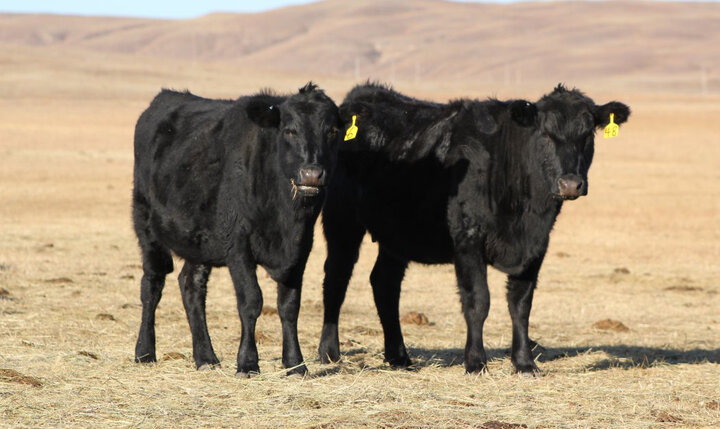Although first-calvers represent your future brood cows, they require more labor, higher quality feeds, and they reward your efforts by weaning the lightest group of calves in the herd. This is temporary, because if we've done our homework with due diligence, they will reward us by being productive cows for a long time.
One of the challenges is providing a high quality diet to these females after calving. In many situations, the energy needs are not met and the first-calf female loses weight and body condition from the time of calving to the start of the breeding season.
The pounds of protein or energy needed by the first-calf female compared to a mature cow at the same stage of gestation or lactation are not all that different. However, the percent of the diet that needs to be protein or energy between these two groups of females is different.
The difference is because of the amount of feed/forage that they can eat. The mature cow can eat more feed compared to the younger female.
For this reason, beginning at least three weeks before calving, first-calvers need to be managed and fed separate from the mature cows. Research conducted at the University of Nebraska reported in the 2004 Nebraska Beef Report indicates that a first-calf-heifer within three weeks of calving experiences a 17% decrease in daily feed intake. These data further illustrate the need to separate first-calf-heifers from mature cows beginning at least three weeks before the start of the calving season and illustrate that nutrient density of the diet has to be high because intake is restricted. Intake is re-established to more "normal" levels by about one week post-calving.
The first-calf-females post-calving need to consume a diet that is at least 62% TDN and 10% to 11% crude protein, depending on level of milk production. Feeding meadow hay that tests 58% TDN and 12% crude protein, prairie hay that tests 54% TDN and 6.5% crude protein, bromegrass hay that is 58% TDN and 11% crude protein, or early-bloom alfalfa that is 60% TDN and 20% crude will not meet the first-calf-female's energy (TDN) needs, whether feeding individually or in a combination of feeds. Some of these forages will not meet their protein needs. A high energy feed needs to be supplemented. Corn, distillers grains, gluten feed, 20% cube, or silage may be good choices. Make sure the protein requirement is met, especially when corn or silage is fed.
In ranch situations, the supplement may be fed on the ground instead of in bunks. Depending on the quality of the hay and the energy content of the supplement, it may take two to three pounds per head per day to meet requirements. Likely there is minimal waste when feeding an energy cube/cake or whole shell corn. When supplementing wet and dry distillers grains on the ground, it is hard to visually find any left on the ground. A research experiment was conducted, and reported in the 2010 Nebraska Beef Report, to determine difference in performance when cattle were supplemented distillers grains in a bunk or on the ground.
A young beef female poses challenges, but she is the future of your cow herd. Don't short her after calving, especially don't skimp on the energy. She has enough challenges between calving and the beginning of the breeding season. Don't over-feed her, but give her an opportunity to be a productive part of the herd.

